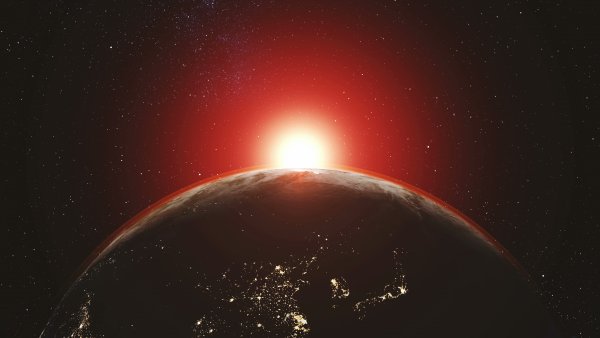Earth’s Days Mysteriously Getting Longer And No One Knows Why
Tags: opinion

Ask any astronomer- they would tell you that Earth’s days are never constant. This is because the rate at which our planet keeps moving at its point is also not constant. The rotation of the Earth has forever been influenced by the mass distribution of the planet, as well as the Moon.
SUBSCRIBE TO THE TRUTH THEORY YOUTUBE CHANNEL, CLICK HERE
This does imply that the day could be shorter than the previous day by a few microseconds, or it also could be longer than 24 hours. Recently, NASA and other space research programs have discovered that the planet seems to have longer days – with no clear explanation in sight.
Earth’s Days Getting Longer With No Discerning Explanation
Interestingly, the fact that the Earth’s days seem to be getting longer doesn’t have conclusive evidence. Rather, it is contradicted by the fact that the 29th of June, 2022 was considered to be the shortest day- when it should have been one of the longest. And before there are any qualms about the accurate representation of a day, there are pulsars as well as atomic clocks that provide scientists with the length of any day precisely. On average though, the length of the days on Earth had been getting shorter until 2020, but since then have only been getting longer. So – one can assume that the 29th of June was the exception, not the norm.
This bizarre aberration in the length of the Earth’s days has definitely puzzled scientists. For, this change is the fastest over the last 50 years- that would be the time that we had the capacity to take close measures of the Earth’s spin accurately. But, what scientists do know are some of the forces that could lead to an alteration in the length of the day. The interaction taking place between the Moon and the Earth is one such reason. This interaction leads to tides taking in the energy out of the system- forcing the Earth to slow down. When dinosaurs were ruling this planet during the Jurassic era– days were half an hour shorter in length.
But while this is a major factor, there are other factors that could also determine the movement of the Earth. According to Professors Mat King and Christopher Watson, the Earth could be simulated as an ice skater who keeps spinning rapidly when their hands are on their chest. In fact, sports scientists would state that this is how they maintain their angular momentum. If we put up in ‘Earth’ terms, the end of the Ice Age has led to glacial melting- which has therefore led to reduced pressure at the poles. This has not only created an isostatic rebound, but it has also led to the mantle redistributing itself through the quarter to the poles.
Also Read: NASA BAFFLED BY STRANGE NOODLE-LIKE OBJECT FOUND ON MARS
This scattering has proven to be definitive to that of the Moon’s gravitational force, which has led to the Earth spinning at a much fast rate. Between 1972 and 2020, the average Earth’s day lost around 3 milliseconds. It has also been understood that the distribution of some form of planetary mass could also occur in a few more varied ways as earthquakes keep shifting mass towards or away from the poles. According to the Professors, even storms could impact the length of a day. Major storms that end up dumping rain around the equatorial line also end up slowing the rotation rate by minimal margins.
Image Credits: Unsplash
Leave Comment: